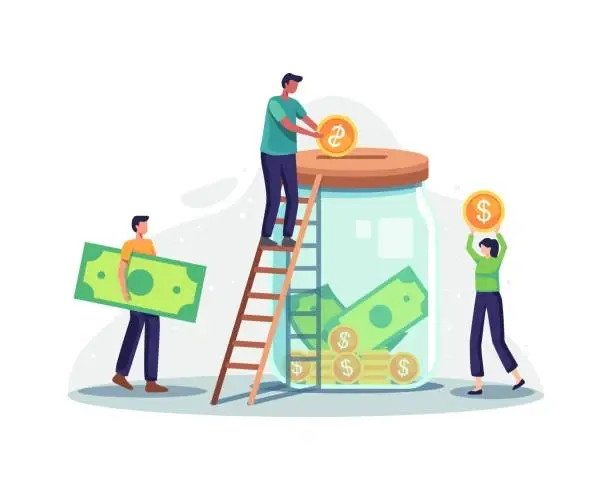Tips for Securing Alternate Funding

John Melendez

With the recent and widespread cuts to USAID, finding federal funding for your nonprofit can be especially difficult. Many nonprofits relied heavily on this financial support, creating a great deal of uncertainty for these organizations and their employees. Fortunately, there are several alternative sources available for founders looking to keep their work going or get their idea off the ground.
Here are a few places you can look for potential support and some advice on how to go about it:
Private and community grants
Grants are a super effective way to jumpstart your organization. There are several different types of grants available to nonprofits with varying benefits and drawbacks.
State governments award state grants, while local grants are given out by county, city, or municipal governments and are often aimed at meeting a community need. These grants tend to be large in scale but come with several tracking metrics and a lengthy application process. Private companies and foundations offer significant grants to select nonprofits at various stages of development. These grants tend to be smaller in size than state and local grants, but also usually have shorter applications and fewer tracking metrics.
In addition to the monetary benefits, grant recipients gain other benefits that further help their efforts, such as additional attention and awareness about their nonprofit’s work, increased credibility for their organization, and improved odds of securing other grants in the future.
Here are some tips for seeking private and community grants:
- Research 990 forms
- Follow funders on social media and newsletters
- Check community foundations
- Network with funders at industry events
- Foster long-term relationships with funders
- Set email/calendar alerts for application deadlines
The key to this approach to secure funding is writing a strong grant proposal. Good proposals respond clearly to the form questions, demonstrate the impact of your work, and (perhaps most importantly) provide all required documentation.
Online peer-to-peer fundraising
Another great option for funding your organization is peer-to-peer online fundraising. Peer-to-peer fundraising refers to using a personal network to generate engagement and revenue for an organization, either through an online page or an in-person event. In contrast, regular online fundraising just uses a donation page and assumes that many of the viewers will be blind leads (viewers previously unaware of a nonprofit’s work). The benefit of this methodology is that it fosters a sense of community and generates more informed leads.
While peer-to-peer fundraising can seem like a harder route for new organizations, this support allows your donors to have a direct connection to your work and provides a grassroots path to financial stability. Online fundraising expands the reach of your fundraising efforts from local to global and allows donors to set up recurring and matched gifts. Finally, online donations are often fast, secure, and straightforward, making it easy for your supporters to engage with you.
The most vital aspects of this option are selecting the right software platform and tailoring your SEO preferences. A good platform makes it easy for people to donate, and proper ad targeting ensures that your organization is marketed to the right audience.
Consider these crucial factors when selecting software:
- A variety of payment types are accepted
- Clickthrough experience (the fewer steps, the better)
And remember the following when setting up your SEO:
- Select maximally relevant keywords
- Optimize title tags and meta descriptions
Peer-to-peer fundraising can also be effective in an in-person context. Nonprofits can set up auctions and phoneathon fund drives to generate financial support and build a community network.
Corporate partnerships
Partnering with local businesses is a great and commonly overlooked funding source. These partnerships allow you to build in-person relationships in your community and enable businesses to participate in a charitable enterprise.
This collaboration can take different forms. Often, businesses set up employee giving and matching gift programs. These programs allow employees to donate to nonprofits and then have their gifts matched by the company, incentivizing their charitable contributions while doubling their impact. Businesses can also engage in cause marketing, a targeted marketing campaign that brings awareness to an issue and supports a charitable organization. Some prominent examples of cause marketing include Box Tops for Education and Livestrong’s yellow wristband campaign.
Consider the following when setting up a matching program:
- Get the message out, make sure employees are aware of the program, and understand how it works
- Make the process quick and easy for donors
- Give consistent updates on your organization and keep donors in the loop
Likewise, make your cause marketing more effective by:
- Creating a strong visual identity for your campaign
- Discuss clear messaging with your business collaborator
- Select good timing for the campaign, avoid overlap with other campaigns, and consider whether or not to tie in with a particular holiday or historical date
While recent events have made this process more difficult, don’t let that dissuade you from pursuing these other funding sources and supporting your nonprofit.
***
Are you starting a nonprofit or community initiative in your area and looking for advice on securing funding for your specific campaign? Sign up for a free one-on-one session with an Idealist Action Incubator Sessions Coach to get tailored guidance on fund-seeking in your area.

John Melendez
John Melendez is a writer and musician based in Brooklyn. His work has appeared in Full Stop Magazine, On The Run, and Bluegrass Unlimited. He is co-author of a biography of jazz trumpeter Kenny Dorham, forthcoming in Spring 2026 from University of Mississippi Press.

